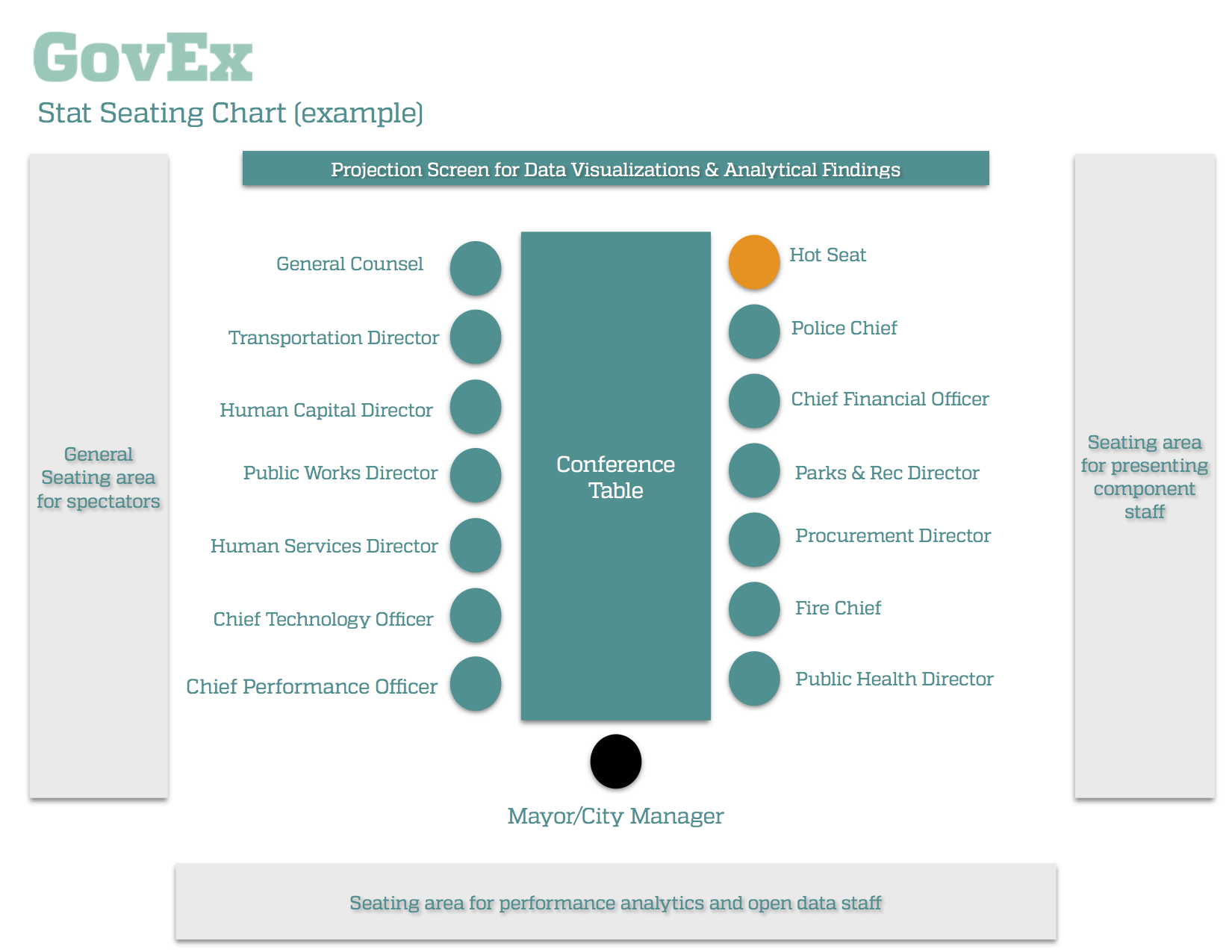Stat Seating Chart (example)
Stat sessions can be configured a number of ways, but they are a few key ingredients every Stat program should include:
- Senior Executive Champion: For citywide Stat initiatives, the Mayor or City Administrator should always be at the head of the table, making it clear they intend to use the Stat process to make more informed choices about service delivery. For department Stat programs, the Department head should sit in the head position for the same purpose. This could be the Police Chief (like CompStat) or the Director of Human Capital, depending on the focus of the meeting.
- Diverse representation from the organization’s senior leaders: For citywide Stat initiatives, the people seated around the table should be department heads, representing as many departments as possible, from public safety to procurement. The same goes for department Stat - the more perspectives around the table the better the outcome.
- Hot Seat: Every Stat session focuses on one topic or one program, so the person with the most responsibility over that topic or program should be sitting in the “hot seat.” In this seat, the senior executive expects thorough answers to all questions and no finger pointing. It’s called the hot seat because all fingers point inward, which can be uncomfortable, but often yields important insights.
- Hot Seat Support Staff: The person in the “hot seat” cannot possibly know everything, so Stat sessions should include space for his/her team to attend. If the component director needs to defer to a subject matter expert, those in the room can chime in. Without support staff present, Stat session action items are too often “get backs” on questions that could not be answered in the room.
- Projection Screen for Data Visualization/Analysis: Without data, a Stat meeting is just another meeting - so having a place for data analysis to be visualized is critical for decision makers to have confidence that they have the best information available. A large projection screen or multiple televisions around the room are a great way to ensure everyone in the room can see the analysis being discussed.
- A place for the analysts: Those who know the data well should have a place in the room, in case there are questions those at the table cannot answer. This includes anyone on the Stat program’s team, members of the performance team and/or members of the open data team. It is also important for those individuals to hear the context of the discussion and the resulting action items, because they will be responsible for recording those actions and tracking progress.
- General seating area for spectators: Stat sessions can be closed to the public, but they should rarely be closed to employees of the organization. Therefore ensure there is a seating area for employees who simply want to listen to the conversation.
